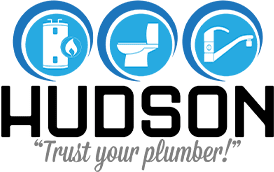Water softeners are one of those appliances that can easily get taken for granted. Because of their low-key maintenance requirements, water softeners often trek on in the background without much concern from homeowners. Which is one of the benefits of having a water softener installed in the first place. But low-key maintenance doesn’t mean any maintenance. A few simple techniques and practices can extend the life of your appliance while still not demanding too much attention.
Hudson Plumbing of Martinsville, Indiana installs HydroQuest water softeners manufactured by Aqua Systems.
Check the Salt Level Every 5 Weeks
Are you noticing signs of hard water in your home? These could include spotty or cloudy dishes, mineral buildup around water fixtures, water that won’t get soapy, and even dry skin. These symptoms all point to low salt levels in your water softener. It’s a common mishap, and it’s easily preventable. At a minimum, try to check your salt level every 5 weeks. Set an alarm on your phone or add a reminder to your calendar. Depending on your water softener, you may need to adjust that timeline slightly.
Don’t Add Too Much Salt
Adding too much salt to your water softener is liable to result in a salt bridge. What is a salt bridge? A salt bridge occurs in the brine tank and is the result of hard crust buildup that prevents salt from dissolving into the water. This halts the creation of brine, and if gone unnoticed over long periods of time, can cause hard water reactions throughout the home. Other causes of salt bridges are dramatic shifts in temperature or high humidity.
Don’t Forget to Add Salt
By the same token, don’t forget to add salt to your water softener! A home without a properly functioning water softener puts its appliances in jeopardy. But it’s also important to use the correct type of salt. According to HomeWater101, “There are three basic types of water softener salt: rock, solar, and evaporated.” The difference in salt is in purity. In general, homeowners should seek out a higher purity salt to prevent residue buildup. Evaporated salt is recommended because it’s the purest of all three options at 99.99% sodium chloride.
Now offering 1-year FREE salt with the purchase of a new water softener installation. Call today to schedule your upgrade!
Flush Resin Bed
Eventually, the resin bed will need to be flushed. The resin bed is the section of the water softener that removes iron from the water. Iron-Out can be used to refresh the resin bed, and it only costs between $10 and $20 from most general/hardware stores. Follow the directions on the package carefully to ensure a true cleaning of the water softener resin bed.
Consider Adding a Pre-Filter
Iron is not the only element that’s processed through your water softener system. Additional sediments are treated as well. While most modern water softeners are equipped to handle sediment, intake of excessive sludge can take years off their lifespan. Regardless of whether or not the system is fed by well or city water, adding a pre-filter is an option that will protect the overall sanitation and can extend its use by years.
ASK YOUR PLUMBER WHAT WATER SOFTENER IS RIGHT FOR YOUR HOME
A properly installed water softener is an investment that will ultimately increase the use of appliances all throughout the home. It’s one of the smartest buys a homeowner can make. Before purchasing a water softener, consult online reviews to determine what consumers are saying about the various models on the market. For an expert opinion, consult your local plumber.

